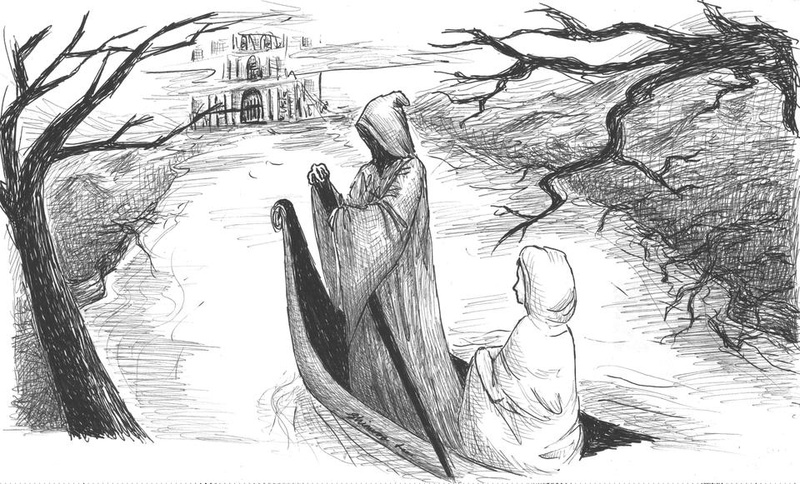“Human Chain,” the newest collection from Nobel Prize-winning poet Seamus Heaney, is filled with the sounds of different languages. “Is scíth mo chrob ón scríbainn” is the title of the first part of one poem; spirits are described as “animae, quibus altera fato Corpora debentur” in another; Guilleric’s “Herbier de Bretagne” is the source material for a third. Although Heaney writes primarily in English, it does not quite do his work justice to describe him as a solely English-language poet. Even when he does not directly cite source languages, the influences of Latin, Irish, Anglo-Saxon, and even a little French course through and shape his poetry.
The many source languages in “Human Chain” are not new developments in Heaney’s work. From excerpts of Virgil’s “Eclogues” to the Anglo-Saxon epic “Beowulf”, Heaney has proved himself time and again as a translator, and his scholarship of other languages is evident in much of his own poetry. This latest collection is not remarkable for any change in the poet’s style or subject. Rather, just as there are echoes of other languages in his verse, there are also echoes of his earlier poems, as Heaney returns to and refines many of the themes that pervade his career.
The experience of a young child picking fruit in the summertime, which Heaney depicted so memorably in “Blackberry-Picking,” from his collection “Death of a Naturalist,” returns once more in “Derry Derry Down.” In “Blackberry-Picking, he described the first ripening berry as “At first, just one, a glossy purple clot,” and recalled the wounds received while collecting the fruit: “Our hands were peppered / with thorn pricks.” Heaney recounts a similar memory in “Derry Derry Down”: “The lush / sunset blush / on a big ripe // Gooseberry: / I scratched my hand / Reaching in // To gather it / Off the bush, / Unforbidden...” But the echoes of Heaney’s earlier work enrich, rather than overwhelm, his newer poem, which still stands well as a separate entity. Its verse form is completely different from the pentameter of “Blackberry-Picking”; short lines are grouped into three-line stanzas, giving rise to a remarkable series of vivid but compressed images.
Heaney himself addresses the idea of echoed meaning and sound in his poem, “An Old Refrain.” In one section, he lists the images and sensations he connects with the sounds of particular words: “In ‘seggins’ / Hear the wind / Among the sedge, //… // In ‘easing’ / Drips of night rain / from the eaves.” Each word, the poet seems to argue, already brings with it an array of associations based on its sound and shape. Heaney is highly adept at using these associations to his advantage, a skill that is particularly evident in the poem “Eelworks,” where he depicts the strange feeling of catching an eel, rather than a fish: “not the utter / Flip-stream frolic-fish / But a foot-long // Slither of a fellow, / A young eel, greasy grey / And rightly wriggle-spined.” With these kennings (“Flip-stream,” “frolic-fish,” “wriggle-spined”), Heaney evokes not only the rhythm of Anglo-Saxon poetry, but also the very particular sound and movement of a flopping fish and a wriggling eel.
And of course, Ireland—its language, landscape, its history, and its mythology—is a constant presence throughout the collection. In the poem “Loughanure,” Heaney references a story about Caoilte and a fairy hill, while later, in “Wraiths,” he speaks of the Sidhe, one of the fairy peoples of early Irish mythology. But Heaney does not limit himself to the stories of early Ireland; his poetry is also informed by the country’s tumultuous modern history. In an earlier poem, “Casualty,” Heaney remembered Bloody Sunday: “PARAS THIRTEEN, the walls said / BOGSIDE NIL.” Now, in “Route 110,” the poet asks: “And what in the end was there left to bury / Of Mr. Lavery... Or of Louis O’ Neill / In the wrong place the Wednesday they buried // Thirteen who’d been shot in Derry?”
“Route 110” is perhaps the most stunning work in the collection. Calling on classical, rather than Celtic, mythology, it is a twelve-part poem in which the speaker maps out his own life, starting with the purchase of a book and his bus ride home, against the journey of Aeneas into Avernus. Although the mythology that Heaney invokes has been used by generations of poets before him, he uses this resonance to his advantage. As he pairs the speaker’s ordinary trip with his mythological vision, he focuses on the most striking images from classical mythology. In “racks of suits and overcoats that swayed” the speaker sees “their owners’ shades close-packed on Charon’s barge.” In the memory of his own bitter romance, he recalls Virgil’s description of the sight of Dido’s shade: “As one when the month is young sees a new moon / Fading into daytime.”
As he returns to ancient mythology, old memories, and early poems, Heaney is aware of his own age. He seems to posit, however, that even in his status as an aging poet, he can re-imagine the experiences of his youth: “As my uncertainty on stairs / Is more and more the lighteheadedness / Of a cabin boy’s first time on the rigging... It’s not that I can’t imagine still / That slight untoward rupture and world-tilt / As a wind freshened and the anchor weighed.” From the memory of sweet summer fruit to the grief for the thirteen men in Derry; from Anglo-Saxon kennings to Latinate similes, Heaney does not shy from revisiting memories and reusing literary techniques. Rather, he returns to them in his maturity with a fresh—if aged—poetic eye to create, in “Human Chain,” an astonishing new collection.
—Staff writer Rachel A. Burns can be reached at rburns@fas.harvard.edu.
Read more in Arts
‘Red’ Isn’t Ready to Retire













